Why Audition Mastery Matters More Than Raw Talent
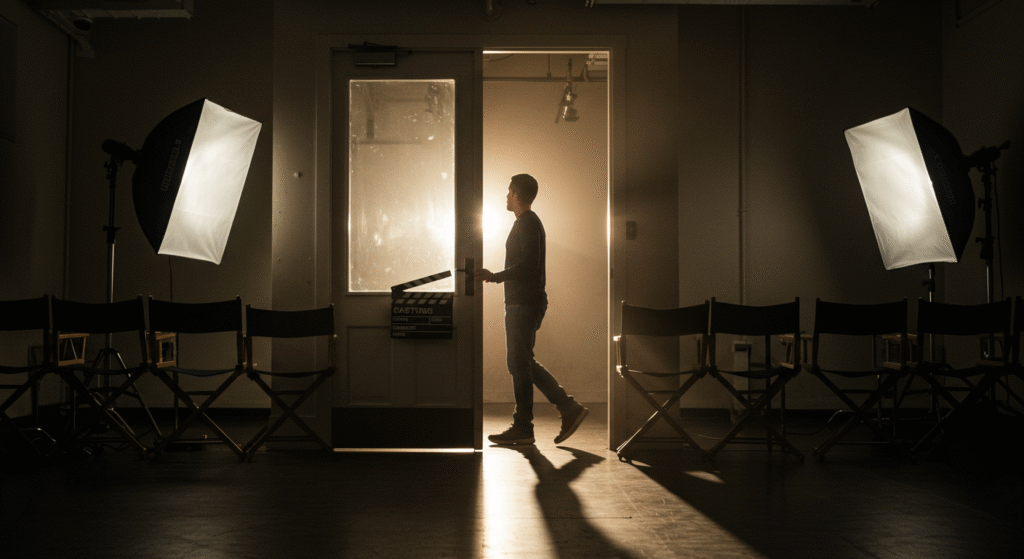
A hard truth of the industry: booking consistently has as much to do with audition mastery as it does with talent. Casting directors see dozens, sometimes hundreds, of competent performers each day. The ones who rise to the top share three things:
- Preparation Discipline – They never “wing it.”
- Adaptive Presence – They read the room and adjust in real time.
- Professional Reliability – They show up early, deliver clean tapes, respond to notes quickly, and generally make a director’s life easier.
When you treat each audition as a micro-contract—an opportunity to prove you’re dependable—you shift from “hope I get lucky” to “I make my own luck.”
Understanding the Casting Ecosystem

Before sharpening tactics, map the ecosystem:
| Player | Primary Goal | What They Value From You |
|---|---|---|
| Casting Director (CD) | Present a select shortlist to producers/directors. | Consistency, preparation, fast turnarounds, easy communication. |
| Associate/Assistant | Organize submissions, schedule sessions. | Clear file labeling, punctuality, quick self-tape delivery. |
| Director | Shape the story’s emotional truth. | Authentic choices aligned with the vision, flexibility in notes. |
| Producer/Showrunner | Protect budget and schedule. | Professionalism, union compliance, low risk of reshoots. |
| Agents/Managers | Secure commissionable work and relationships. | Actor reliability, good feedback from CDs, momentum. |
Key Insight
Casting is risk management. Prove you reduce risk—show that you come prepared, take redirection instantly, and safeguard the production’s schedule—and you instantly differentiate yourself.
Building an Unmistakable Actor Brand

Branding isn’t about pigeonholing; it’s about clarity:
- Define Your Casting Range
- List the archetypes you naturally embody (e.g., grounded mentor, offbeat best friend, steely detective).
- Refine this to a five-word snapshot a CD can remember.
- Craft a One-Liner
- Example: “I bring quietly intense, morally complex characters to life.”
- Align Your Materials
- Headshot wardrobe, reel clips, and website banner should all hint at that core essence.
- Update Regularly
- Refresh photos every 18–24 months or after major appearance changes.
A clear brand accelerates casting decisions; ambiguity slows them.
Essential Marketing Materials
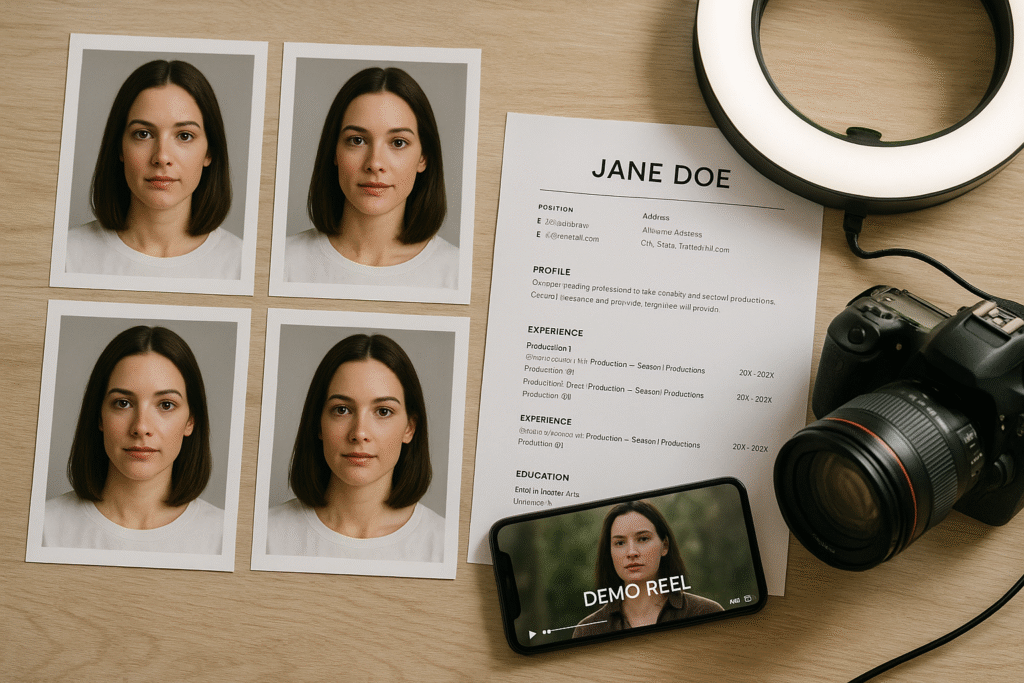
1. Headshots That Pop
- Eyes First – Focus sharpness on the eyes; they anchor attention.
- Neutral Expressions – One approachable smile shot, one dramatic neutral.
- On-Brand Wardrobe – Colors and textures matching your casting lane.
- High Resolution – 300 dpi for print, compressed copies for online submissions.
2. Actor Resume
- Keep it to one page.
- List recent, relevant credits first.
- Drop outdated theatre roles after five years unless prestige is strong.
- Include special skills verifiable on the spot (no “fluent French” if you can’t improvise a scene in it).
3. Demo Reel
- Open with your strongest 20 seconds.
- Total length: 60–90 seconds for new actors; 120 seconds max for veterans.
- Label file “Firstname_Lastname_Reel.mp4”.
4. Website & Casting Profiles
- Purchase a clean domain (e.g., FirstnameLastname.com).
- Embed reel, headshots, and PDF resume.
- Sync data across Spotlight, Actors Access, Backstage, and IMDbPro—consistency builds trust.
Finding (and Tracking) the Right Auditions

- Subscription Platforms
- U.S.: Actors Access, Backstage, Casting Networks.
- U.K./EU: Spotlight, Mandy, Casting Call Pro.
- Social Media & Email Lists
- Follow regional CD offices on Instagram; casting assistants often post breakdowns in Stories.
- Join city-specific Facebook Groups (e.g., “Atlanta Actors,” “Vancouver Self-Tapes”).
- Agent Submissions
- If freelancing: send quarterly updates detailing new skills, training, or footage.
- For represented actors: check in politely, not pushily—“How can I support your pitching?”
- Create a Tracker
| Date | Project | Role | Type (Film/TV/V-O) | Submitted | Callback | Notes |
|---|---|---|---|---|---|---|
A simple spreadsheet reveals patterns: which genres you keep placing in, which CDs respond, and average turnaround times.
Mastering the Sides Before You Arrive

Actors book roles in the deep work done before entering the room.
- Break Down the Script
- Circumstance – Who, what, when, where?
- Objective – What does your character need?
- Obstacle – What stands in the way?
- Tactic – How will they get it?
- Moment Before – Emotional energy at the top of the scene.
- Verb Work
- Assign active verbs to each beat (e.g., coax, confront, disarm). Actionable language keeps delivery dynamic.
- Memorize for Freedom, Not Perfection
- Know lines cold, but practice with different intentions so you can adapt if redirected.
- Rehearse With Constraints
- Perform while walking, doing dishes, balancing books—physical multitasking embeds text in muscle memory, freeing attention for direction notes later.
Winning Self-Tape Strategies
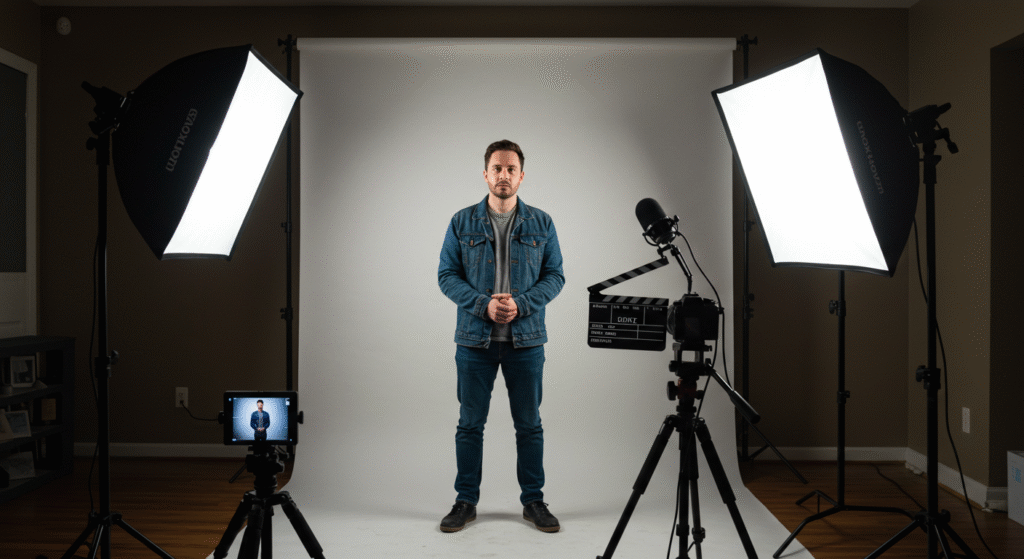
With more casting moving online, a polished self-tape is non-negotiable.
- Gear Checklist
- Mid-range DSLR or modern smartphone shooting 1080p minimum.
- Tripod at eye level.
- Softbox or ring light at 45-degree angles.
- Neutral gray or pale blue backdrop (flat sheet works).
- Lavalier or directional mic.
- Frame It Right
- Standard: mid-shot (chest to top of head with a small margin).
- Allow room for natural gestures but avoid dead space.
- Slate Smart
- Smile, state name, height, union status, agent.
- For minors: guardian and school info if requested.
- Label Files Precisely
- “Project_Role_FirstnameLastname_Take1.mp4”.
- Compress sensibly (under 200 MB) without visible loss.
- Submit Early
- A tape delivered 24 hours ahead often gets watched sooner and allows time for retakes if requested.
Room Work: Nailing the Live Audition
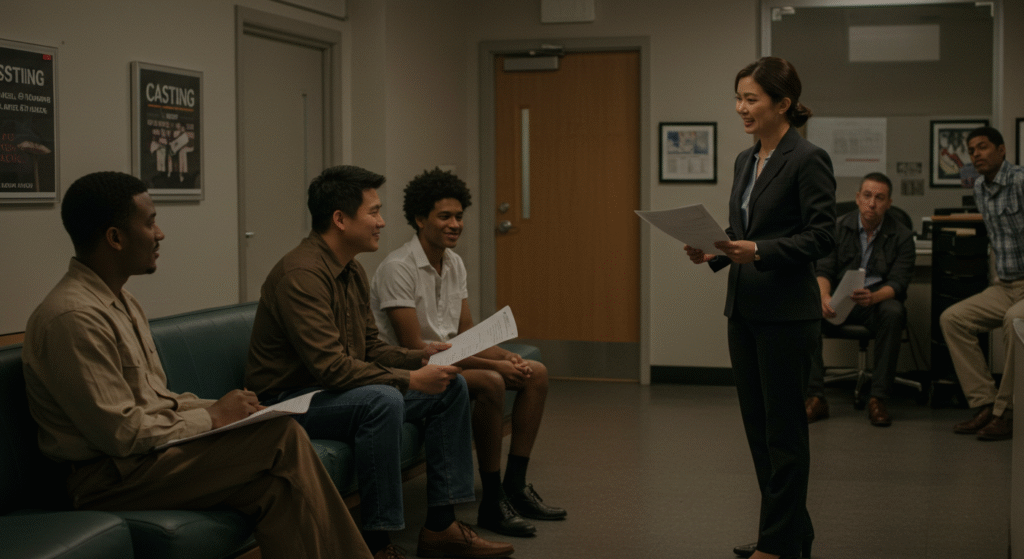
The Arrival
- Aim for 15 minutes early.
- Check in; immediately turn phone to airplane mode.
- Do a brief vocal warm-up in hallway corners—quiet humming scales are enough.
The Setup
- Greet reader and CD with genuine warmth—eye contact, nod, concise “Good morning.”
- Ask, “Would you prefer the sides in hand or off-book?”
- Mark your eyeline: choose a consistent imaginary partner over the reader’s shoulder.
During the Read
| Do | Don’t |
|---|---|
| Listen actively to notes. | Apologize after a mistake—just pick up cleanly. |
| Commit to physicality within frame. | Wander aimlessly; keep movement motivated. |
| Hold final moment for two beats before dropping character. | Break character instantly; it looks rushed. |
Exiting
- Simple “Thank you.”
- Collect belongings swiftly.
- Exit the building before calling your agent or dissecting the take. Casting walls have ears.
Callbacks & Producer Sessions
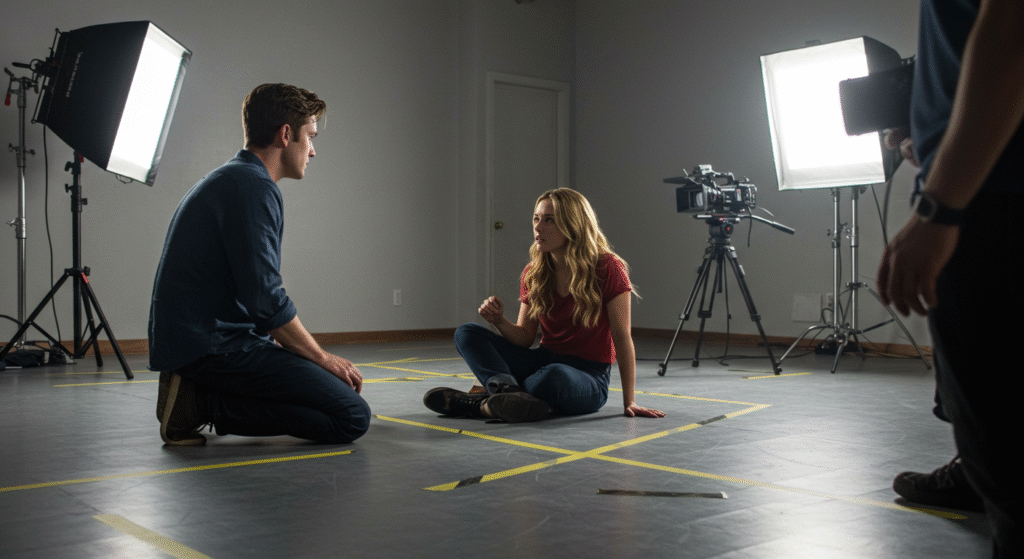
Callbacks filter top contenders; your job is to prove reliability.
- Wear Similar Wardrobe – Reinforces memory.
- Show Consistent Choices, Add Layers – Don’t overhaul; deepen.
- Expect Chemistry Reads – Practice staying present while new energy (scene partner) enters.
- Prepared to Improvise – Producers may test spontaneity.
Virtual & Remote Casting Etiquette

When producer sessions move to Zoom:
- Hard-Wired Internet – Ethernet > Wi-Fi.
- Neutral Username – “Firstname Lastname – ROLE”.
- Camera at Eye Level – Build an instant connection.
- Look at Lens, Not Screen – Reads as direct engagement.
- Backup Plan – Phone hotspot and spare device within reach.
Cold Reads & Improvisation on the Spot
Casting sometimes hands out fresh pages moments before reading.
- Skim Structure: Identify beginning, core conflict, end.
- Anchor Names & Pronouns: Misnaming characters distracts CDs.
- Choose a Simple Objective: One clear desire drives the scene.
- Read Loudly Once: Engages auditory memory.
- Deliver Boldly: CDs know you had no prep. They want instincts.
Monologues: Your Secret Weapon
Even in a world of sides, a killer monologue can rescue an audition if technology fails or a CD says, “Show me something else.”
- Two Contrasting Pieces: One contemporary dramatic (under two minutes), one comedic or classical.
- Keep It Fresh: Rotate material yearly to avoid rote recitation.
- Cut Wisely: Remove references that confuse modern listeners; clarity over completeness.
- Practice Under Time Pressure: Perform start-to-finish in noisy cafés to train focus.
Voice-Over and Commercial Casting Tips
Voice-Over
- Silence Floor: Aim for −60 dB noise.
- Three Takes Max: ABC method—vary pacing and attitude.
- Mark Pickup Phrases: Snap fingers before redo; editors love clear wave spikes.
Commercial On-Camera
- Look to Lens: Unlike film sides, commercials often require direct address.
- Hit the Turnaround: Deliver brand line while turning toward key light for maximum facial clarity.
- Subtle Product Interaction: Don’t overshadow product; showcase it seamlessly.
Mindset, Resilience, and Mental Conditioning
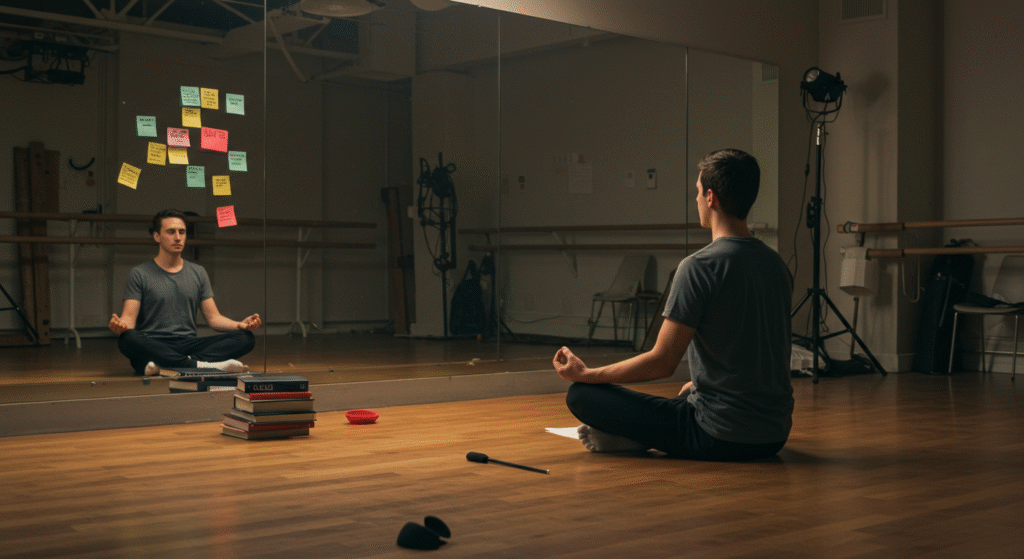
Rejections stack quickly; mental durability prevents burnout.
- Process Goals Over Outcome Goals
- Aim: “Deliver one authentic moment” vs. “Book the role.”
- Audition Debrief Ritual
- Journal three things that went well, one tweak for next time.
- Mindfulness Practice
- Five-minute breath work reduces cortisol spikes pre-room.
- Community Circles
- Join a weekly actor workout group to normalize rejection stories and share wins.
Networking Without the Ick Factor
Replace “networking” with “relationship building.”
- Volunteer at Film Festivals – Help Q\&A sessions; directors remember helpful faces.
- CD Workshops – Attend sparingly; target CDs casting your type and market.
- Social Media – Comment thoughtfully on casting office announcements; congratulate peers publicly.
- Follow Up – A brief email—subject: “Thank You for Yesterday’s Session”—reinforces professionalism.
Data-Driven Improvement: Measuring What Works
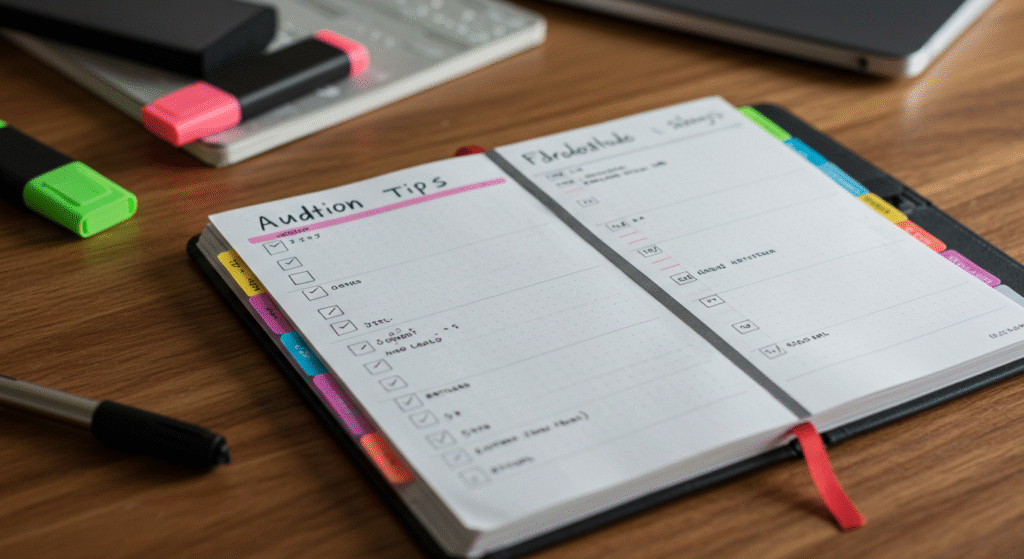
Treat auditions like A/B tests.
- Track Metrics – Auditions submitted, callback rate, booking rate.
- Pattern Analysis – Do you book more in comedic roles but submit mostly drama? Adjust focus.
- Material Refresh – If callback percentage dips under 10 %, update reel or headshots.
- Expert Feedback – Quarterly session with acting coach to review recent tapes.
Common Audition Mistakes to Dodge
- Over-Memorizing Into Rigidity – Leaves no room for redirection.
- Ignoring the Reader – Acting is reacting; treat them as scene partner.
- Commenting on the Character – Play truth, not judgment.
- Technical Sloppiness in Self-Tapes – Bad audio equals instant skip.
- Unprofessional Email Addresses – Create a dedicated firstname@ domain.
Frequently Asked Questions

How many auditions should I aim for weekly?
Quality first, but 3–5 targeted submissions per week keeps momentum without burnout.
Should I hire a professional reader for self-tapes?
Yes, when possible. A skilled reader elevates your performance and timing; remote readers via apps like WeAudition are affordable.
How long should I wait before following up on a self-tape?
If the breakdown indicates a shoot window, follow up 48 hours before first shoot date. Otherwise, assume no news is normal.
Do background roles help or hurt?
Background work grants set experience but rarely influences casting for principal roles. Prioritize principal auditions once comfortable on set.
What if I strongly disagree with a director’s note in the room?
Implement the note anyway. Demonstrating adaptability outweighs proving creative disagreement.
Final Thoughts: The Year You Level Up

Audition mastery is a craft—equal parts preparation, marketing savvy, emotional intelligence, and resilience. Implement even half of the strategies above and you:
- Reduce technical reasons for rejection.
- Showcase a consistent, memorable brand.
- Transform auditions from intimidating hurdles into opportunities for micro-performances.
Make this, the year you shift from hoping to book to expecting to book. Show up prepared, stay adaptable, and remember: every read is a chance to prove you’re the easiest person in the world to hire.
Break a leg—and then book the gig.

